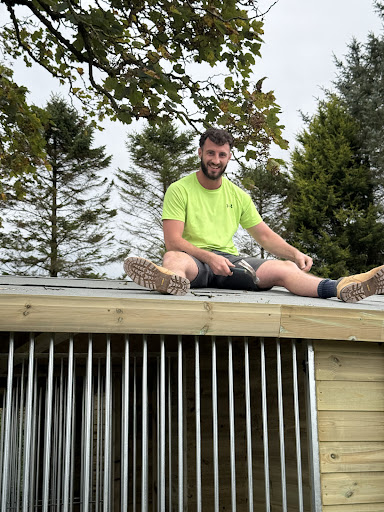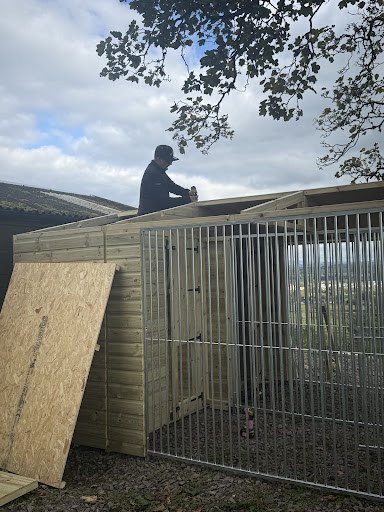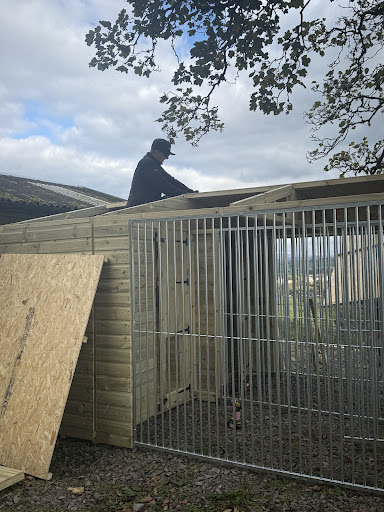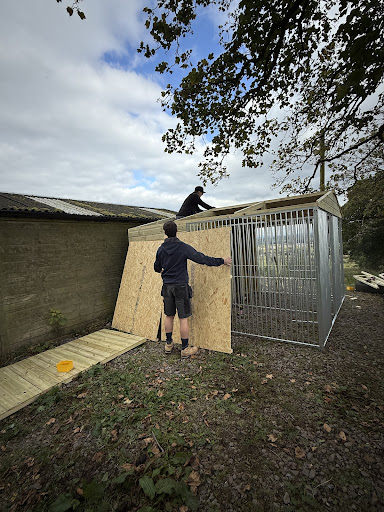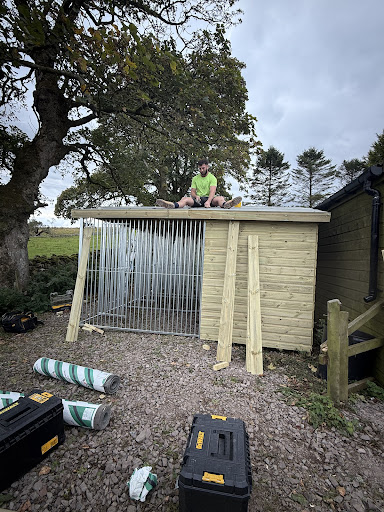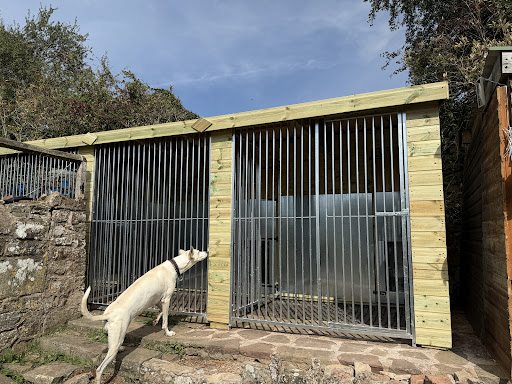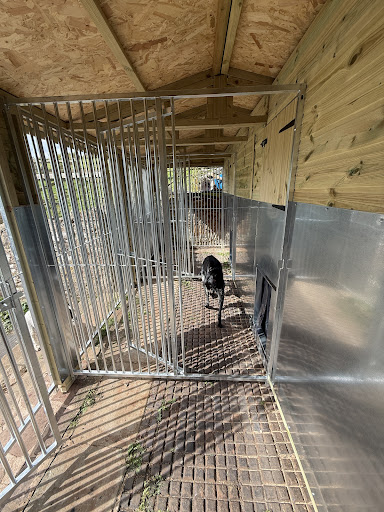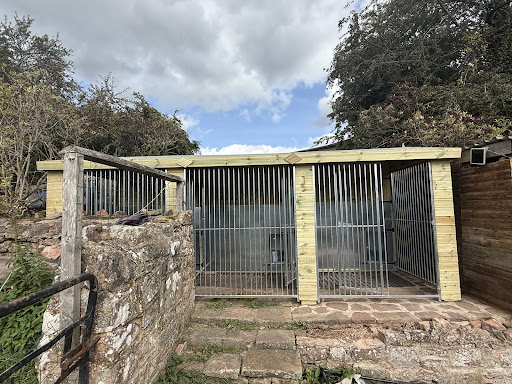Dogs are an important part of the family and deserve to live comfortably. An indoor crate may be fine temporarily, but you’ll need a bigger solution for your dog when left alone for a while. An outdoor kennel is often the best choice for pets, as it provides enough space and shelter.
Many people choose to utilise single kennels as they offer space and amenities for your dog to be comfortable. However, when it comes to figuring out the right size kennel for your dog, you may be wondering what option is the right fit.
There are a lot of factors to consider when choosing a kennel, including the size, features, and placement. While selecting the perfect kennel for your pet may feel challenging with so many options available, picking out the right one for your dog is simple if you follow a few tips. We’ll explain everything you need to know about picking out the perfect kennel for your dog, including how to figure out the right size.
How Can a Kennel Affect Your Dog’s Overall Well-Being?
A dog’s environment directly affects its well-being. Whether you’re using a crate or a kennel, creating a safe and comfortable space for your dog is essential to their health and happiness. The purpose and function of a kennel are to provide enough space for your dog to move around as well as provide a safe and comfortable place for them to rest.
While it’s similar to a crate as it provides a secure enclosed area for your pet, a kennel is a more long-term solution for your pet to stay in. For instance, if you need to leave your dog alone for a couple of hours, a kennel will be more comfortable and stimulating for your dog than a crate.
Comfort
If you plan on leaving your pet in a kennel, you’ll want to ensure they are comfortable. Choosing a design that features both an indoor and outdoor space is essential for comfort. Your dog will need to have the space to move around, wag their tail, and jump. You might also consider leaving comfortable and familiar items in the kennel. A dog bed in the rest area might be a great addition for your dog to feel comfortable while staying in the kennel.
Safety
The kennel will need to be safe for your pet to spend time alone outdoors. Having an enclosed runner is the best way to ensure that your pet is safe. With a fenced-in space, your dog won’t be able to run away. Outside predators also won’t be able to get inside.
You’ll also need to consider the durability of the materials used for the structure. The kennel will need to withstand weather conditions like rain and wind. You might also need to consider destructive dog behaviour when choosing your materials. Dogs that chew through things might cause damage to the kennel depending on the material, so you’ll need to choose options that will be hard for dogs to get through.
Another facet of kennel safety you should consider includes the installation process. As a semi-permanent structure, it requires a bit of expertise to install it properly. You will likely want to have a professional install the structure to ensure that it is safe and secure.
How Do You Measure Your Dog for the Perfect-Sized Kennel?
Some kennels are specifically built to accommodate more than one dog at a time. However, single kennels are specifically meant for one dog, so you should measure accordingly. The kennel should provide enough space for your dog to move around but shouldn’t be so big that your dog doesn’t feel safe to rest.
How To Measure A Dog For Kennel Size?
The ideal measurements for a kennel will depend on the dog. You’ll need an indoor space where the dog has enough space to sleep in any position comfortably. To ensure that you choose a kennel with the right amount of indoor space, measure your dog while they’re napping. You’ll have a clearer idea about the length and width you’ll need for the space. It’s important to note that the indoor/sleeping area of the kennel should be cosy and not too large, as the shelter should be a relaxing and restful place for your dog.
How Big Should A Kennel Run Be?
For the runner space, your dog will need more room to move around and enjoy the outdoors. You’ll want to measure your dog when it’s standing on its hind legs. The height of this space should be taller than the dog’s head when standing back on its legs, so you’ll want to measure your dog by taking the tape measure from its paws to the top of its head. Depending on the size of your dog, you’ll want to add two to seven inches to the total height for an accurate idea of the necessary space you’ll need.
Your Dog’s Weight When Choosing A Kennel
You can also consider your dog’s weight when picking out single kennels. For a small dog weighing 18 to 24 pounds, you’ll want to go with a kennel that has an indoor space that is around 2 feet (length) x 1.5 feet (width). For a dog that weighs around 70 to 90 pounds, you’ll want to consider kennels that are at least 3.5 feet (length) x 3 feet (width). The outdoor runner area should provide enough space for your dog to walk around and feel comfortable. For large types of dog breeds, you should go with the option that offers the most outdoor space.
Other Factors To Consider
When you go to pick out a new kennel for your dog, there are a few other things you should consider besides your dog’s measurements. These considerations include different dog breeds, ages, and activity levels. These factors may impact the design, size, and additional kennel features you may need. For active breeds, you’ll want to pay attention to the runner portion of the kennel. If you have a dog that enjoys running around or playing, having the extra space will be worth it regardless of the dog’s size. For young dogs, you’ll also want to ensure that they have plenty of space to play and walk around.
What Size Kennel Is Available For My Dog?
For single kennels, you’ll find these structures come in a few different standard sizes to accommodate different types of dogs. If you’re looking to buy a kennel, you might want to consider which standard size is right for your particular dog.
Small Kennels
While kennels are larger than crates, there are still small options available. For these sized kennels, small dogs will live and exist comfortably. Typically, you’ll find that these small kennels measure between 6 X 3 ft and 12 X 4 ft. Popular dog breeds that fit within this category include chihuahuas, pugs, Yorkshire terriers, and Pomeranians. These small breeds will fit best within a small kennel.
Medium Kennels
If you have a medium-sized breed of dog, you’ll need a slightly larger space than a small kennel. Some of the most popular mid-size breeds include cocker spaniel, bulldog, border collie, and Jack Russell terrier. If you have one of these dogs, you’ll want to ensure that your pet has enough space to stay comfortable and happy. Medium sizes of single kennels generally fall between 8 x 6.5 feet and 14 x 4 feet.
Large Kennels
Large breeds will need a lot of space to stay comfortable. For breeds like rottweilers, labradors, and Irish setters, the space will need to be big enough for them to walk around and sleep easily. Active breeds and young dogs also benefit from having more outdoor space for activity. The dimensions of large kennels vary, but common sizes range from 12 x 8 feet to 14 x 8 feet.
Additional Tips for Choosing the Right Kennel for Your Home
Though picking out an appropriate size for your dog is essential for the comfort and overall well-being of your dog, you might also take into account other considerations. Factors such as weather, temperature, budget, location, and spatial issues will also play a role in determining the right kennel for you and your dog.
Setting a Reasonable Budget
One of the biggest considerations you’ll have to take into account while shopping for kennels is your budget. Though there are affordable options available in varying sizes, generally large-sized kennels will cost more than small ones. Ultimately, your budget will determine how you prioritise your needs and wants for the kennel size.
If you need a large kennel for your dog breed, you should consider ways to offset this cost. Opting for no add-ons or extra features could help with your budget. If you are working with a wider budget, however, you might want to consider buying extra features to make your dog more comfortable. Some of the features might include more durable materials, built-in dog bowl holders, and anti-chew strips.
Understanding Your Space Limitations
A kennel is a bigger commitment than a crate. As a semi-permanent structure in your garden, you’ll need to consider your space limitations. For small gardens, you may not have the space for a large kennel. You should make sure to get the measurements of your garden and the space where you would like to place the kennel to ensure that it will fit within the area.
Determining the Right Placement of the Kennel
The placement of the kennel is also dependent on the size of the kennel. For your dog’s comfort, you’ll want to find the right location to place the kennel in your garden. Some of the outdoor factors that might affect your dog’s comfort include direct sunlight, rain, wind, and snow. If you live in a harsh or cold environment that might see a lot of different weather conditions, you’ll want to ensure that your kennel is placed in a well-protected area.
You should also consider how close you would like the kennel to your house. Kennels may attract dirt, insects, and other undesirable outdoor things that could make their way to your house. On the other hand, you’ll likely want the kennel close by to check on your dog regularly. You’ll have to determine the best place to put a kennel in your garden before deciding on the size, as you may find that you prefer specific kennel dimensions for the location.
Preparing for the Climate
Climate plays a considerable role in determining the right outdoor kennel for your dog. For cold weather, you’ll want to make sure that the sleeping/indoor area is cosy and insulated, especially for short-haired dogs like a chihuahua. To ensure that the indoor area is warm, you’ll want to get the sizing right. An area too big will likely be drafty for small dogs and won’t promote rest or comfort.
Picking out the right size kennel is crucial to your dog’s overall comfort and well-being. However, you may find it confusing as to which kennel size will work best for your situation. Depending on your dog’s breed, activity levels, and age, the right size kennel may vary.
In general, you should aim to find a kennel that has an indoor area that comfortably fits your dog lying down and an outdoor area that can accommodate your dog’s movements and play.
There are various sizes in kennels ranging from small to large, which can accommodate different breeds. We have single kennels made out of durable materials and available in many different sizes to provide a safe and comfortable experience for your dog.













